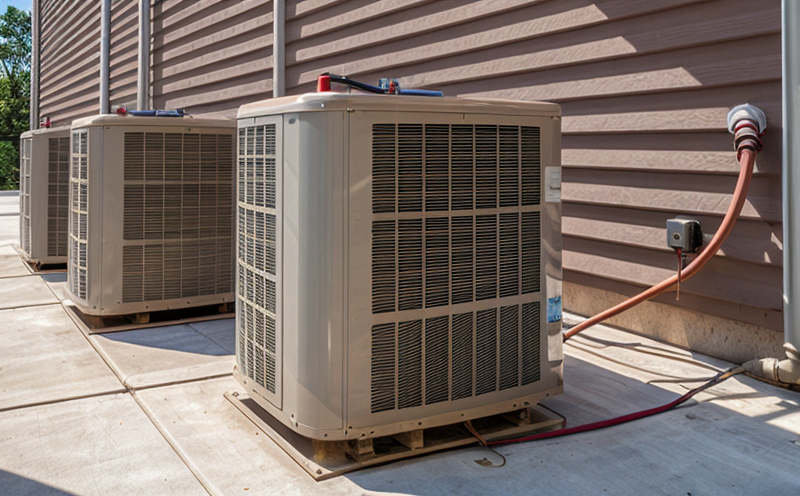ISO 7730 Ergonomics of Thermal Environment
The ISO 7730 standard is an internationally recognized guideline that defines the minimum requirements for thermal comfort in indoor environments. This standard applies to various types of buildings and structures, including commercial offices, residential spaces, schools, and other facilities where people spend significant time indoors.
Thermal comfort refers to a person's subjective assessment of whether the thermal environment is acceptable. The ISO 7730 standard provides a framework for ensuring that indoor environments meet these criteria by specifying parameters such as air temperature, mean radiant temperature, air velocity, and relative humidity. These factors are crucial in determining how people perceive their surroundings and whether they feel comfortable.
Understanding the principles behind ISO 7730 is essential for quality managers, compliance officers, R&D engineers, and procurement personnel involved in building design, construction, and maintenance. The standard ensures that new buildings or renovations are designed to meet ergonomic standards, thereby enhancing occupant satisfaction and productivity.
The methodology outlined in ISO 7730 involves the calculation of predicted mean vote (PMV) and predicted percentage dissatisfied (PPD). PMV is a measure of thermal comfort based on air temperature, mean radiant temperature, relative humidity, and air velocity. PPD indicates the proportion of occupants who are not satisfied with the thermal environment.
The standard also covers psychrometric charts and calculation methods for determining the required conditions to achieve thermal comfort. Understanding these concepts is vital for engineers and designers working in HVAC systems testing.
To meet ISO 7730 requirements, laboratories must use accurate measurement instruments such as thermocouples, hygrometers, anemometers, and psychrometers. These tools help ensure precise measurements of the environmental parameters that influence thermal comfort.
Testing according to ISO 7730 involves setting up a controlled environment where all relevant parameters are measured over time. Occupants' responses to different conditions are also recorded to provide subjective feedback on thermal comfort levels. This data is then used to adjust and optimize the HVAC system to meet the standards.
By adhering to ISO 7730, organizations can ensure that their indoor environments are not only compliant with international regulations but also optimized for occupant well-being and productivity. This approach supports sustainable building practices by reducing energy consumption and improving overall comfort levels.
Applied Standards
| Standard | Description |
|---|---|
| ISO 7730 | Ergonomics of the Thermal Environment: Calculation of Predicted Mean Vote (PMV) and Predicted Percentage Dissatisfied (PPD) |
| ASTM E1592 | Determination of Air Velocity in Rooms Using a Hot Wire Anemometer |
Benefits
- Enhances occupant satisfaction and productivity.
- Promotes energy efficiency by optimizing HVAC systems.
- Achieves compliance with international standards.
- Supports sustainable building practices.
- Improves indoor air quality through better thermal management.
Customer Impact and Satisfaction
The implementation of ISO 7730 testing significantly impacts customers by ensuring that their indoor environments are optimized for comfort, efficiency, and sustainability. This leads to higher occupant satisfaction levels, which in turn translates into improved productivity and reduced absenteeism.
For quality managers, this means having a clear set of guidelines to follow when evaluating the thermal environment of buildings. Compliance officers can use ISO 7730 as part of their audit processes to ensure that all facilities meet ergonomic standards. R&D engineers benefit from detailed testing protocols that allow them to refine HVAC systems and improve overall building performance.
Procurement personnel can leverage this standard during the selection process for HVAC equipment, ensuring that the chosen products are capable of delivering the required thermal comfort levels. By adhering to ISO 7730, organizations not only meet regulatory requirements but also set a benchmark for excellence in indoor environmental quality.





